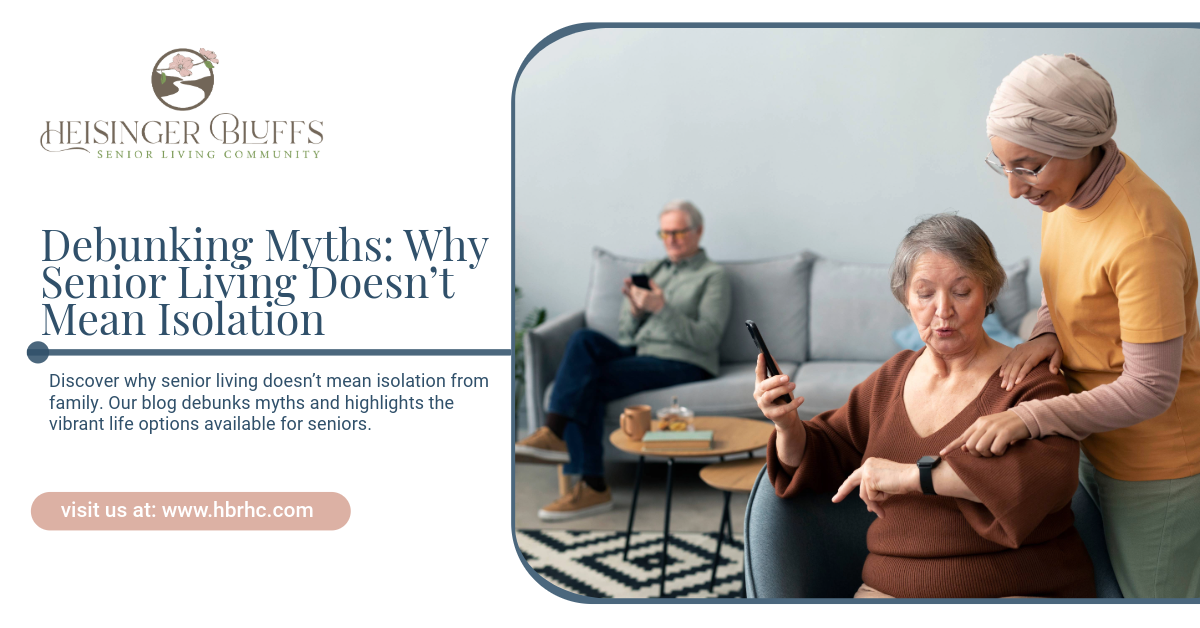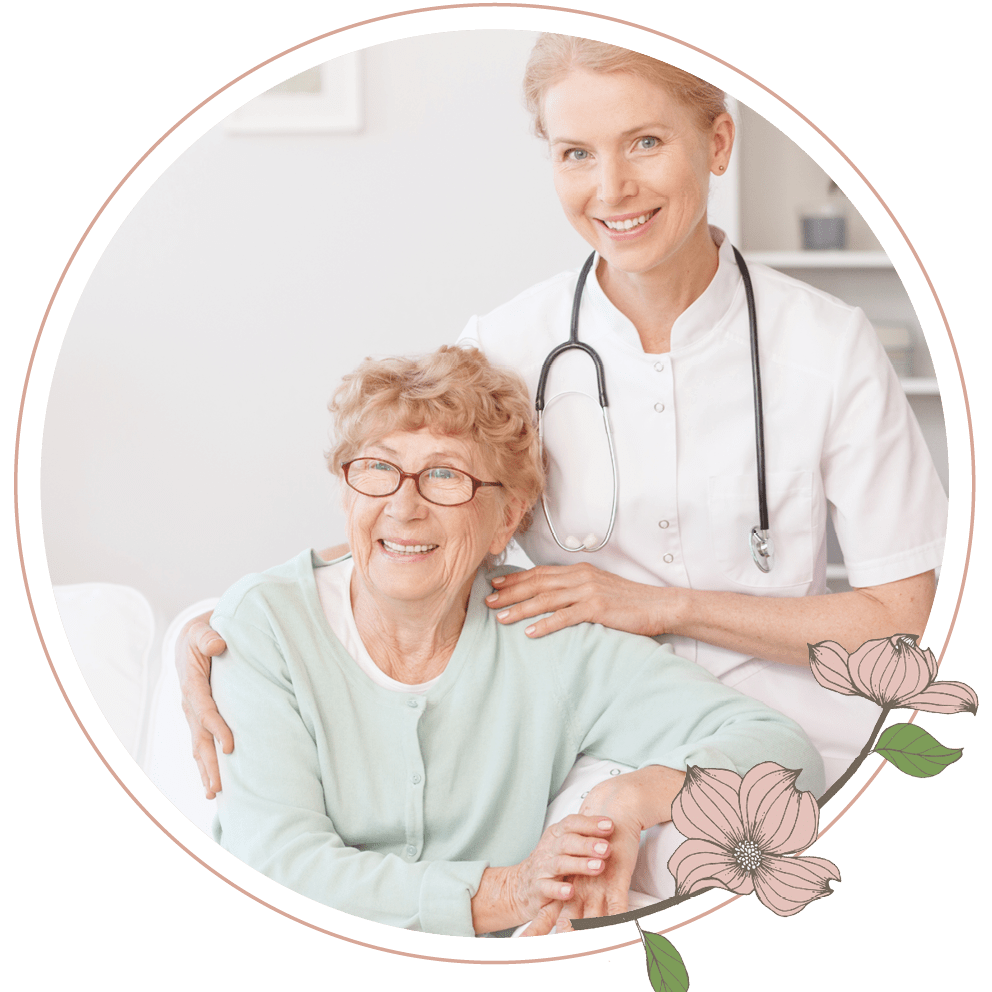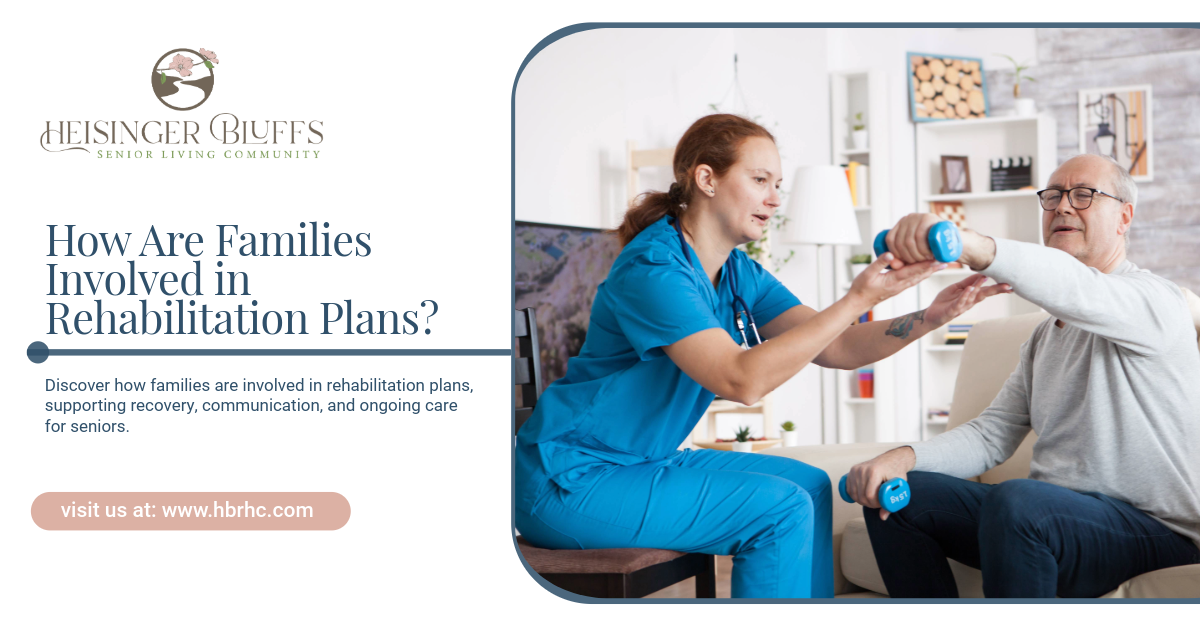Debunking Myths: Why Senior Living Doesn’t Mean Isolation

Key Highlights
- Senior living environments actively combat social isolation, fostering meaningful connections among older adults.
- Many misconceptions equate senior living with loneliness, despite evidence of vibrant social interactions.
- Structured activities and community events enhance engagement, creating a sense of belonging.
- The positive impact of socialization on mental and physical health greatly benefits residents' overall well-being.
- Independence and personal choice are prioritized in senior living, allowing residents to thrive while forming support networks.
- Embracing social connections significantly contributes to improved quality of life for older adults in these communities.
Many people think of senior living as a place where older adults are alone and face social isolation. This is not true. In fact, people who live in senior living communities often get to enjoy more social interaction and a better quality of life. These places are made to help people get to know each other and feel happy together. When we talk about the benefits of senior living, we see that it is not just a place to stay. It is a lively place where people can make meaningful connections. As people focus on their health and happiness, senior living lets them get involved, make friends, and find a new sense of purpose. This helps many people feel good and brings the most out of their later years.
Understanding the Myth: Senior Living Equals Isolation
Many people think that senior living causes social isolation for older adults. But this is not true. In fact, senior living often brings a lot of social interaction and a good sense of community. Saying that these places make people lonely misses the point. There are many ways for older adults to meet others and connect. This can help with depression and can slow down cognitive decline. A lot of people find a new sense of purpose in senior living. They get better quality of life. And, the best part is, they are with others who have the same interests and life experiences.
Common Misconceptions About Senior Communities
Many people think that senior communities mean loneliness and no social interaction. They do not see how lively and social these places can be. The idea comes from old stereotypes that say older adults do not take part in things. But the truth is different. Senior living helps people connect with others. There are shared interests, group activities, and organized events that bring people together. This helps to make the quality of life better. If we question these old beliefs, we will see the real benefits of senior living. It helps the emotional well-being of older adults. It also gives them a strong sense of purpose and helps them feel more included.
Where These Misconceptions Originate
Misunderstandings about senior living often come from common ideas and stories that people hear, not from real experience. The media often shows older adults as lonely or forgotten. This supports the idea that people in these places are on their own. Families can worry about things like cognitive decline and the risk of depression. This can make it hard to see all the good things, like daily social time that happens in senior living communities. Many people do not know about the helpful support in place that brings people together and helps them to stay active and involved.
The Reality of Social Life in Senior Living
Senior living places are active and full of life. In these spaces, social interaction is strong and the idea that older adults feel alone is not true. People there help each other find a sense of purpose by taking part in shared activities and making new friends. Many older adults join in on group events that help both their mental health and physical health. This can lower the chance of depression and slow down cognitive decline.
There are both planned social events and chances to meet in a more relaxed way. This mix helps improve the quality of life for everyone there. Senior living is a place where older adults can feel joy, connect with others, and get support from the community.
Built-In Opportunities for Connection
Senior living places are made to help fight social isolation in older adults. These communities have many chances for people to connect and talk to each other. One way is with meals in shared dining rooms, which invites everyone to have social interaction and build real friendships. There are also common areas where people can go to join in activities and feel a stronger sense of purpose. On top of that, things like game nights or exercise classes are set up often, so people get to know each other better and make new friends. All this connection not only helps support better mental health and physical health, but it may also help cut down the risk of cognitive decline and depression.
Organized Events and Activities That Foster Engagement
Senior living communities focus on bringing people together. They hold many events and activities meant to help older adults join in. These group activities help people make real connections and lower social isolation. They also boost life quality. There are things like fitness classes and hobby groups. The different options help keep the mind active and create a strong feeling of belonging. This support helps lower the chances of depression and stops cognitive decline. Being a part of these events lets people have a better and more fulfilling life in senior living. It helps give all residents a new sense of purpose.
The Positive Impact of Socialization on Well-Being
Socialization is very important for older adults. When people join in social activities, they can lower their risk of depression and cognitive decline. It also helps give them a sense of purpose in life. Many studies say that having good social connections can help improve physical health, boost immune function, and lower the chance of heart disease. When seniors build strong and meaningful relationships in senior living communities, it has a great effect on their minds and emotions. This helps increase their quality of life and makes them feel better every day.
Emotional and Mental Health Benefits
Better emotional and mental health can happen when older adults spend time with others in senior living communities. When people have regular social connections, they are less likely to feel social isolation. This helps lower the risk of depression and anxiety. These lively places also help you feel a sense of purpose and that you belong. That is very important for mental strength as people get older. Taking part in social activities can also help with immune function and heart health. Because of all this, the quality of life for older adults can be much better.
Physical Health Advantages of Staying Connected
Taking part in social activities in senior living communities is be great for the physical health of older adults. Regular social interaction helps people move more, which lowers the risk of heart disease and helps the immune function work better. When older adults are part of a group, they also face less risk of depression. This is important because depression can make cognitive decline worse. Having a good social network gives seniors a sense of purpose. In the end, this helps them feel good, be healthy, and live better lives. Older adults can really thrive and stay healthier when they have strong, meaningful relationships with others.
How Senior Living Communities Promote Independence and Belonging
In senior living communities, the focus is on helping people keep their independence. The people who live there are urged to make their own choices. This lets them be themselves and feel in charge of their lives. This freedom, along with many chances for social interaction, helps them build close friendships and support groups. These things are very important for the emotional well-being of older adults. Joining in community activities lifts everyone's mood. It also fights off social isolation and helps older adults feel they belong. All of this is great for their quality of life in senior living communities.
Encouraging Personal Choice and Autonomy
Creating a place where people have choices is important in senior living. Here, older adults get to decide how they spend their day, the things they do, and even how they live. This helps them have a strong sense of purpose and to feel that they belong. When people are given this power, it helps stop social isolation. It also helps their mental health, because they can take part in real conversations and activities with other people. Letting them make choices can really lift their quality of life. It can also lower the risk of cognitive decline and feeling down or depressed.
Building Friendships and Support Networks
There are many chances for older adults to make friends and build support groups in senior living communities. These places help people meet and talk with others. This social interaction lets them do things together and talk about their day. Doing these things can boost their sense of purpose and make life feel fuller. When residents form close bonds, it helps their emotional and physical health. This also lowers the risks that come with social isolation, depression, and cognitive decline. Friendships in senior living do more than make each day better. They help people feel valued, cared for, and add to the overall quality of life.
Final Thoughts
Many people assume senior living means isolation, but that couldn't be further from the truth. In reality, these communities offer older adults daily opportunities to connect, socialize, and build lasting friendships. Regular interaction with peers enhances emotional well-being and supports both mental and physical health, creating a happier, more engaged lifestyle.
Being part of a community also gives seniors a renewed sense of purpose. Sharing daily routines, joining group activities, and simply spending time with others can reduce the risk of depression and slow cognitive decline. At Heisinger Bluffs, we believe every resident deserves a life filled with connection, joy, and belonging. Contact us today to learn how our vibrant community helps older adults thrive through meaningful relationships and shared experiences.
Frequently Asked Questions
Do senior living communities feel like nursing homes?
Senior living communities and nursing homes are not the same. Senior living places focus on letting people keep their independence. They also encourage everyone to join in and be social. Residents here get to enjoy more freedom in their lives. They can make new friends and take part in community activities. It feels lively, not like the clinical mood you get in nursing homes. This way, people get help but also have ways to connect and have fun every day.
Can I still participate in hobbies and interests?
Yes, many senior living places support people in doing their hobbies and interests. There are many activities and clubs you can join. This way, you get to do what you like and meet others who enjoy the same things. It makes your days better and helps you feel like you belong. Taking part in these things also helps you feel good and part of the group.
What if I prefer quiet time or privacy?
Senior living communities understand that people may want quiet time and privacy. Most of them give you a private space to live in. At the same time, you can join in and talk to others when you want. This way, residents get both alone time and the chance to be with others. The balance is there for you, so you can choose what feels best for you each day.
Sources:
- https://www.nia.nih.gov/health/loneliness-and-social-isolation/loneliness-and-social-isolation-tips-staying-connected
- https://www.webmd.com/healthy-aging/what-to-know-about-cognitive-decline-in-older-adults
- https://www.ncoa.org/article/exercise-programs-that-promote-senior-fitness/
- https://newsroom.clevelandclinic.org/2022/12/09/why-socialization-is-important-for-older-adults
- https://www.who.int/news-room/fact-sheets/detail/mental-health-of-older-adults











